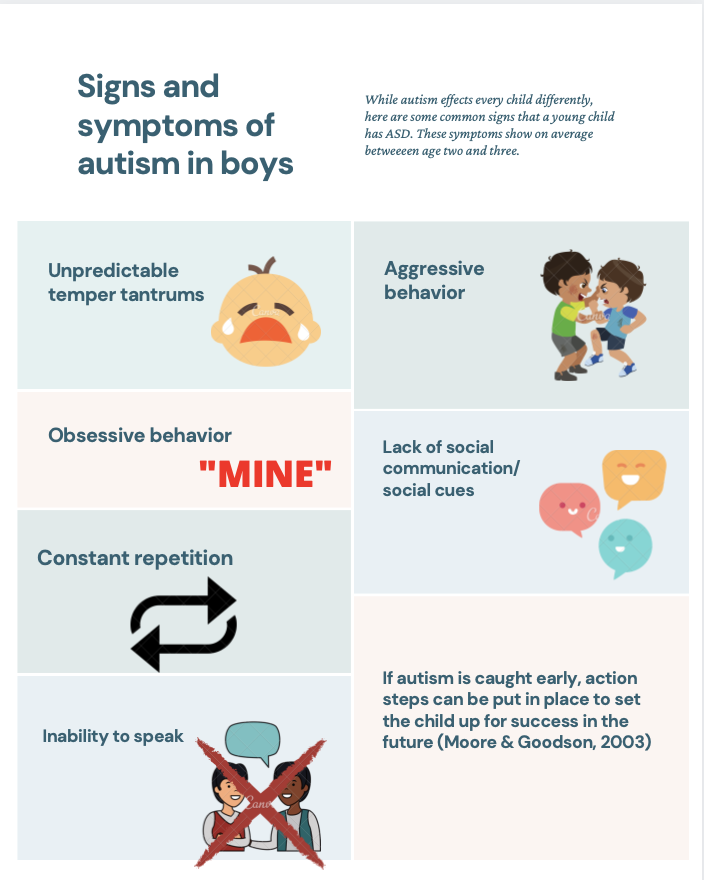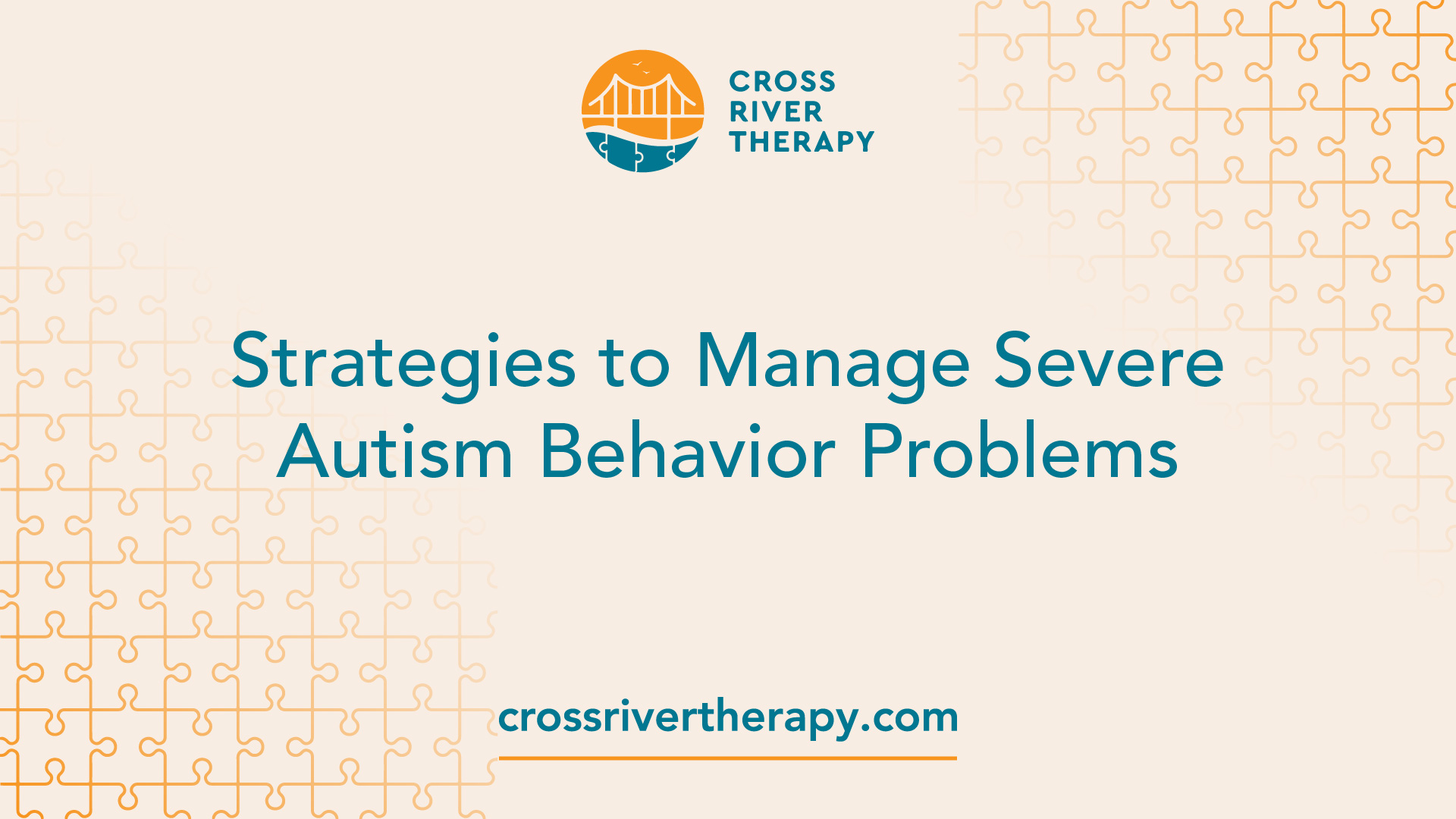How to support with strategies from an trusted Aba Therapist
How to support with strategies from an trusted Aba Therapist
Blog Article
Understanding the Impact of Behavioral Autism on Day-to-day Live and Social Communications
You could not understand just how deeply behavior autism influences everyday life and social interactions. Individuals on the spectrum commonly navigate a world full of interaction difficulties and sensory overload. These obstacles can bring about disappointment and isolation, impacting their relationships and overall well-being. Understanding these nuances is essential for cultivating encouraging environments. What strategies can we carry out to develop more inclusive spaces and purposeful connections? The responses may shock you.
Specifying Behavioral Autism and Its Characteristics
Behavioral autism, usually referred to as autism range condition (ASD), includes a series of conditions defined by difficulties in social interaction, interaction, and repeated behaviors. You could observe that individuals with ASD typically battle to analyze social cues, which can result in misunderstandings in discussions. They may locate it difficult to develop eye call or take part in little talk, making social situations feel overwhelming.
Interaction difficulties can materialize in various methods, from postponed speech development to a choice for using fewer words. Recurring habits, such as hand-flapping or rocking, can serve as coping devices to manage anxiety or sensory overload. These qualities can exceptionally affect every day life, making it necessary for you to understand and support those with ASD. By acknowledging these attributes, you can promote a setting that advertises acceptance and urges reliable communication, helping individuals with autism grow in their everyday communications.
The Range of Autism: Comprehending Variability in Habits
Autism spectrum condition (ASD) isn't a one-size-fits-all medical diagnosis; it varies commonly among individuals. You may encounter people who are extremely spoken and engage conveniently in discussions, while others might choose singular tasks or connect non-verbally.
Moreover, the method individuals with ASD respond to sensory input can differ greatly; some could be overwhelmed by intense lights or loud noises, whereas others prosper in boosting settings. The range likewise includes distinctions in social interactions; some individuals may struggle to translate social hints, while others navigate social settings with loved one ease. Understanding this irregularity is vital, as it aids you value everyone's one-of-a-kind experience and dressmaker support to their details demands, promoting a much more inclusive environment for everyone.
Communication Challenges Faced by Individuals With Autism
When you engage with people on the autism spectrum, you may see their special interaction difficulties. They typically deal with problems with both nonverbal and spoken signs, which can influence their social interactions. Recognizing these obstacles is necessary for cultivating far better connections and assistance.

Verbal Interaction Troubles
Lots of people on the autism range experience verbal communication problems that can significantly affect their everyday communications. Your quantity, speed, or tone could not align with social expectations, causing others to misinterpret your objectives. Acknowledging these obstacles can aid you and your assistance network develop strategies to improve communication and promote far better connections with others in your daily life.
Nonverbal Communication Barriers
Verbal communication isn't the only difficulty people on the autism spectrum face; nonverbal interaction barriers can be equally as substantial. You could discover it challenging to interpret body language, faces, and eye call, which are important for effective interaction. These challenges can cause misconceptions or misconceptions of social hints, making communications feel frustrating or confusing. You may battle to reveal your very own feelings with nonverbal means, leaving others not sure of your feelings or intents. This separate can develop sensations of isolation and aggravation. Recognizing these obstacles is important for fostering understanding and empathy in your communications. By addressing nonverbal communication, you can locate techniques to boost your social experiences and boost your total lifestyle.
Social Communication Impacts
Social communications can commonly feel overwhelming due to the special communication difficulties faced by people with autism. You could battle with analyzing social hints, making it difficult to comprehend sarcasm or body movement. This can lead to misconceptions or unpleasant moments in discussions. Additionally, launching and preserving conversations might really feel tough, causing stress and anxiety in social scenarios. You might favor organized atmospheres, making spontaneous interactions uneasy. It's likewise common to experience difficulty in participating in small talk, which can hinder developing new relationships. Recognizing these difficulties can assist you find methods to boost interaction, such as browse around this site exercising social abilities in safe setups or making use of aesthetic help - Aba Therapist. Recognizing your needs allows you to navigate social communications with higher self-confidence and ease.
Social Communication and Partnership Structure in Autism
While structure relationships can be challenging for people with autism, understanding their special viewpoints and interaction designs can cultivate significant connections. You may notice that lots of people on the spectrum like direct communication and might have problem with social hints or tiny talk. By being uncomplicated in your communications, you can assist produce an environment where they feel comfy.
Put in the time to observe and listen exactly how they reveal themselves. This insight can assist you in steering discussions extra successfully. Taking part in shared rate of interests can additionally function as a bridge to deeper links. Whether it's a leisure activity, a favored program, or a mutual enthusiasm, these typical threads can open up doors to relationship.
Daily Life Regimen: Browsing Approaches and obstacles
Steering daily life routines can be specifically testing for people with autism, especially when unexpected modifications happen. To navigate these challenges, take into consideration applying aesthetic routines or checklists.
Developing a regimen that includes sensory breaks can additionally be beneficial. You can intend time-outs throughout your day to charge. It's essential to connect with those around you, letting them recognize your demands and preferences. This assists produce an understanding atmosphere.
Finally, practice mindfulness strategies to take care of tension and anxiousness. Basic breathing exercises or grounding methods can make a significant distinction. By incorporating these strategies, you can boost your day-to-day routine and minimize disturbances, making life feel a lot more manageable.
Staminas and Capacities of Individuals on the Autism Spectrum
Understanding life routines is simply one facet of the autism experience. Many people on the autism range possess amazing toughness and capabilities that set them apart. You may find that your interest to detail is exceptional, allowing you to master tasks that call for accuracy and emphasis. Your ability to think outside the box can lead to innovative services in numerous circumstances.
Moreover, your memory skills commonly beam, especially in areas of interest. Aba Therapist. This flair for keeping info can make you a valuable source in fields like art, scientific research, or innovation. You might likewise display strong aesthetic reasoning, allowing you to picture complex principles and solve problems creatively
Furthermore, your one-of-a-kind viewpoint on the globe can cultivate compassion and understanding in others, enriching social interactions. Welcoming these staminas not only improves your self-confidence yet likewise helps others appreciate the diverse abilities you give the table.
Producing Comprehensive Atmospheres for People With Autism
Developing inclusive environments for people with autism starts with making sensory-friendly rooms that cater to their distinct demands. You can also cultivate possibilities for social communication, helping to construct links and friendships. By making these modifications, you'll contribute to a more welcoming environment for everybody.
Designing Sensory-Friendly Spaces
While making sensory-friendly spaces, it's important to mirror on the one-of-a-kind needs of individuals with autism. Incorporate peaceful zones where individuals can pull back and charge when bewildered. Include get more aesthetic routines or clear signs to aid people navigate the area confidently.
Advertising Social Communication Opportunities
Designing sensory-friendly areas not only addresses private convenience yet useful source also establishes the phase for purposeful social communications amongst people with autism. Urge peer mentoring, coupling individuals with autism with helpful peers that can direct them through social situations. By carrying out these approaches, you can enhance social opportunities, helping people with autism develop friendships and strengthen their social skills in a safe, inviting setting.

Often Asked Inquiries
Just How Can Pals Assistance Someone With Behavioral Autism?
You can sustain a friend with behavior autism by being client, paying attention proactively, and appreciating their boundaries. Engage in tasks they enjoy, connect openly, and produce a comfortable environment where they really feel valued and understood.
What Resources Are Available for Parents of Kid With Autism?
You can check out various resources for parents of children with autism, including support system, instructional internet sites, and local area solutions. Getting in touch with various other moms and dads can additionally supply beneficial insights and shared experiences to aid browse obstacles.
Can Behavioral Autism Modification With Time?

Yes, behavior autism can transform in time. You might see changes in interaction, social abilities, and behavior as your youngster expands. Early treatment and assistance usually play essential roles in these developing changes.
How Do Sensory Sensitivities Impact Daily Life?
Sensory sensitivities can make daily experiences overwhelming. You might fight with loud sounds or bright lights, leading to stress or avoidance. Finding atmospheres that accommodate your requirements can substantially enhance your convenience and general everyday life.
What Are Typical Misconceptions Concerning Behavioral Autism?
You may think behavioral autism only influences interaction skills, but it's even more facility. Several presume people do not have compassion or knowledge, which isn't true. Understanding these misunderstandings helps foster approval and support for those on the range.
Behavior autism, typically referred to as autism range disorder (ASD), includes a range of problems defined by challenges in social communication, communication, and recurring habits.Social communications can often feel frustrating due to the one-of-a-kind interaction obstacles encountered by people with autism.Creating sensory-friendly rooms not just addresses private convenience however likewise sets the stage for purposeful social communications among people with autism. Urge peer mentoring, pairing individuals with autism with supportive peers who can lead them with social situations. By implementing these strategies, you can improve social chances, helping people with autism develop relationships and strengthen their social abilities in a secure, welcoming atmosphere.
Report this page